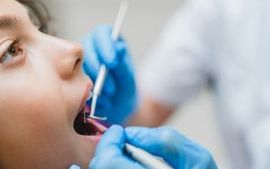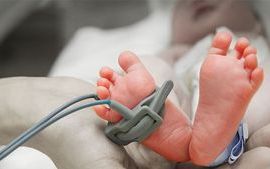- Published:
- 20 January 2025
- Author:
- Elizabeth Ralph
- Read time:
- 6 Mins
Inborn errors of immunity are a broad range of inherited immune defects that affect all aspects of the immune system. They predispose to infections, autoimmunity and malignancy, and the majority manifest in childhood.1 These conditions present both diagnostic and treatment challenges.
The diverse and often non-specific presentations of some inborn errors of immunity (IEIs), also known as primary immune deficiencies (PIDs), can resemble other non-immunological conditions. As a result, missed or delayed diagnoses can occur, particularly in primary care settings where awareness of IEIs may be limited. The use of artificial intelligence (AI) and machine learning as screening tools for IEIs may help overcome this issue.2
A number of research groups, including the INTREPID team at UCL, the PIDCAP project at the Vall d’Hebron Barcelona Hospital and Liberty University with the Jeffrey Modell Foundation’s SPIRIT Analyzer are developing machine-learning approaches. These models can be trained to recognise IEIs on the basis of clinical features of known cases extracted from electronic health records. The models can then use data from the health records of undiagnosed IEI patients to identify potential cases and thus enable earlier diagnosis.
However, there are hurdles to the implementation of AI into a routine diagnostic setting. These hurdles include the non-standardised nature of much electronic health record data, as well as data security and privacy concerns. Nevertheless, this is a rapidly growing field that may become part of the diagnostic landscape in the not-too-distant future.
Complications in genetic diagnosis
The diagnosis of IEIs is further complicated by the fact that many of these conditions are also genetically heterogeneous – in the case of severe combined immune deficiency (SCID), there are multiple genes that may underlie such a diagnosis.3 Comprehensive genetic testing is, therefore, important for accurate diagnosis and appropriate treatment. Whole-exome sequencing (WES) and whole-genome sequencing (WGS) can detect mutations across a broad range of immune-related genes, rather than attempting to sequence multiple individual candidate genes.
The NHS Genomic Medicine Service, established in 2018, has provided testing for all types of IEI via the R15 gene panel, which now includes 574 genes (v7.21).4 However, WGS and WES can also pose challenges: variants of uncertain significance (VUS) may be identified, genes may have poor coverage, pseudogenes may be present and sequencing may not include areas such as promoter regions. VUS with unclear, or as yet unreported, disease associations require cautious interpretation.5 The ability and capacity to investigate these VUS at the protein/cellular level is important and remains a challenge within NHS diagnostic laboratories outside a few specialist centres, often requiring a partnership with university research laboratories.
Early detection
It has long been known that the best patient outcomes occur when IEIs are detected early, even before the condition has begun to manifest and before disease burden, particularly infectious complications, has accumulated.6 After a delay due to the COVID-19 pandemic, the NHS pilot of newborn screening of SCID launched in September 2021 across 6 screening centres in England with a plan for a 2-year trial and a further 1 year to analyse the data.
A 7th centre joined in late 2023 and the trial was extended by a further 6 months. Almost 1 million babies have been screened for SCID since the start of the evaluation. The data collected during the pilot and the future implementation of the programme are currently under evaluation.7 In a more recent development, Genomics England has launched a pilot study called the Generation Study.8 The study will recruit participants across 19 hospitals in England to screen for over 200 rare but treatable genetic conditions. The study, one of the first of its kind globally, aims to offer early diagnoses, enabling timely intervention and, therefore, improved outcomes for children with rare conditions.
This approach aims to prevent the delayed diagnosis many families face and mitigate the impact of progressive conditions before symptoms develop. Conditions included range from metabolic disorders to IEIs, all selected because they are treatable in the early stages. This will be an interesting project to watch.
Once diagnosed, the diversity of IEIs requires personalised treatment protocols, as few standardised regimens exist for these rare and complex conditions. Supportive therapies, such as immunoglobulin replacement and prophylactic antimicrobials, are the mainstays of management for IEI, but for many conditions, curative options are necessary. Haematopoietic stem cell transplant (HSCT) has been a cornerstone in this, but it is resource-intensive, dependent on suitable donor availability and carries risks, including graft-versus-host disease. Despite improvements in HSCT protocols, such as reduced-intensity conditioning and alternative donor transplantation, e.g. cord blood cells, obstacles remain, particularly for patients without fully matched donors.9
Gene therapy represents an ever-growing frontier in the treatment of IEIs, offering the potential for correction of specific gene mutations in patient-derived haematopoietic stem cells with potentially fewer side-effects. Previous issues with insertional mutagenesis that occurred in early trials using gamma retroviral vectors have been addressed using newer techniques, such lentiviral mediated gene insertion, which offers an improved safety profile. Phase I and II clinical trials have shown promise in the treatment of a number of forms of SCID, as well chronic granulomatous disease (CGD), Wiskott-Aldrich syndrome (WAS) and leukocyte adhesion deficiency, with improved immune function demonstrated in patients.
Pre-clinical studies for numerous other IEIs are also underway using conventional lentiviral gene addition and more targeted gene editing strategies.10 A base editing approach has been used to correct a mutation in the CYBB gene, while prime editing (a newer form of CRISPR-Cas9) has been trialled to correct a specific hot spot mutation in the NCF1 gene, both of which encode part of the NADPH oxidase complex, defects in which cause X-linked CGD and p47-CGD respectively.11 First-in-human trials of these, as well as for other IEIs, such as WAS, are on the horizon.12,13
Despite the promise that gene therapy holds for treatment of IEIs, there are regulatory hurdles and significant cost barriers that limit the widespread use of gene therapy outside specialised centres. The high cost of treatment development and complex manufacturing processes required for such advanced therapy medicinal products have meant that commercial interest has been limited, particularly when the market population for the treatment is small.14
A project is underway at Great Ormond Street Hospital (GOSH), funded by GOSH Children’s Charity and LifeArc, to explore whether GOSH could deliver a licensed therapy using its own good manufacturing practice facility in a not-for profit sustainable model, using ADA-SCID gene therapy as an example drug product.
Despite these challenges, the potential for AI in the earlier diagnosis of IEIs, advances in genomic medicine and rapidly developing treatment options offer a promising future in the field and paediatric immunology laboratories will continue their work to support this.
References available on our website.
Return to January 2025 Bulletin
Read next
Beyond the tooth: The far-reaching impacts of dental caries
20 January 2025
Challenges in paediatric laboratory medicine
20 January 2025
Wales Pathology Symposium and coastal walk
20 January 2025




